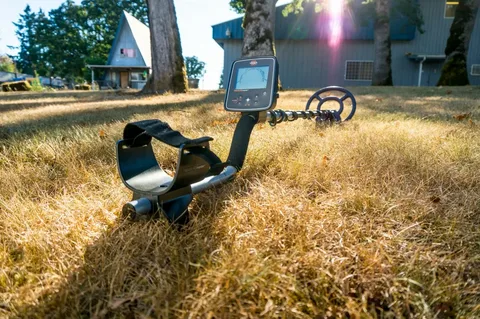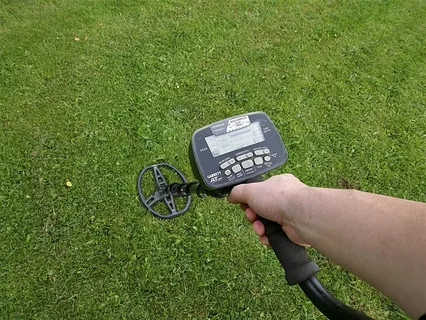Common Excavator Problems and How to Fix Them: A Guide
نوفمبر 22, 2024
Common problems with excavators and how to fix them have been a headache for many construction and excavation professionals. Excavators معدات تنقيب 24 (20/11) are crucial equipment in various construction and mining projects, but they are also prone to a range of issues that can hinder their performance. In this guide, we will discuss some of the most common excavator problems and provide practical solutions for fixing them. Whether it’s hydraulic issues, electrical malfunctions, or mechanical failures, we’ve got you covered with expert advice and troubleshooting tips. So, if you’re looking to keep your excavator in top-notch condition and minimize downtime, read on for valuable insights into addressing common excavator problems.
Common excavator problems can include hydraulic issues, engine problems, electrical malfunctions, and more. To fix hydraulic problems, check for leaks, inspect the hydraulic fluid levels, and ensure the filters are clean. To address engine issues, check for fuel and air leaks, change the filters, and inspect the fuel system and spark plugs. For electrical malfunctions, test the battery and electrical connections, and replace any faulty wiring or components. Regular maintenance and inspections can help prevent these problems from occurring. If uncertain, consult an experienced mechanic or technician for further assistance.
جدول محتوى المقال
The Top 10 Common Problems with Excavators

1. Hydraulic leaks: Leaking hydraulic fluid can lead to decreased performance and potential equipment damage if not addressed promptly.
2. Engine issues: Problems with engine overheating, starting, or loss of power can hinder the excavator’s performance.
3. Track or undercarriage issues: Worn or damaged tracks, rollers, and idlers can affect mobility and stability.
4. Bucket and attachment problems: Wear and tear on buckets and attachments can hinder digging, lifting, and dumping capabilities.
5. Electrical system malfunctions: Issues with the electrical system can disrupt various functions of the excavator.
6. Cooling system problems: Inadequate cooling can lead to engine overheating and decreased efficiency.
7. Power loss: Various factors, including fuel system issues and mechanical problems, can lead to power loss in the excavator.
8. Hydraulic cylinder failures: Malfunctioning hydraulic cylinders can affect the excavator’s ability to perform digging and lifting operations.
9. Fuel system issues: Problems with the fuel system can lead to poor engine performance and potential breakdowns.
10. Operator error: Inexperienced or negligent operators can contribute to excavator problems, including component damage and operational issues.
Troubleshooting Guide for Excavator Malfunctions

A troubleshooting guide for excavator malfunctions provides a comprehensive list of potential issues and their corresponding solutions. It typically includes problems such as hydraulic leaks, engine issues, electrical problems, and operational malfunctions. The guide is designed to help equipment operators and maintenance personnel quickly and efficiently identify and address any issues that may arise during the operation of an excavator. It offers step-by-step instructions for diagnosing and resolving common problems, as well as safety precautions and maintenance tips to prevent future malfunctions. This guide is an essential resource for anyone working with excavators to ensure the efficient and safe operation of this heavy machinery.
Fixing Hydraulic System Issues in Excavators

Hydraulic system issues in excavators can include leaking seals, hydraulic fluid contamination, and slow operation. These issues can be caused by wear and tear, improper maintenance, or external damage. To fix hydraulic system issues in excavators, it is important to diagnose the specific problem, replace any damaged components, and ensure proper maintenance practices are followed. This may involve cleaning or replacing hydraulic filters, inspecting and replacing seals or hoses, and regularly checking hydraulic fluid levels and quality. It is recommended to consult with a professional technician or service provider for complex hydraulic system repairs.
Preventative Maintenance Tips for Excavator Owners

– Regularly inspect and replace worn or damaged parts such as filters, hoses, and belts to prevent unexpected breakdowns.
– Keep the excavator clean and free of debris to prevent damage to moving parts and ensure proper functioning.
– Check and maintain proper fluid levels, including engine oil, hydraulic fluid, and coolant, to keep the excavator running smoothly.
– Grease all necessary fittings as outlined in the owner’s manual to reduce wear and improve the lifespan of moving parts.
– Monitor and address any unusual noises, vibrations, or leaks, as these can be signs of underlying issues that need immediate attention.
– Keep track of the excavator’s service schedule and adhere to recommended maintenance intervals to ensure optimal performance and minimize the risk of major repairs.
Dealing with Electrical Problems in Excavators
When it comes to dealing with electrical problems in excavators, it is essential to have a thorough understanding of the equipment and its electrical systems. Excavators are complex machines with various components that rely on electrical power to function properly. Common electrical issues in excavators can include faulty wiring, blown fuses, malfunctioning sensors, and issues with the battery or alternator.
To effectively address electrical problems in excavators, it is crucial to have a skilled technician who is knowledgeable about the machine’s electrical systems. Using diagnostic tools and equipment, the technician can identify the root cause of the problem and make necessary repairs or replacements.
Regular maintenance and inspections can also help prevent electrical issues in excavators. Checking for loose connections, damaged wiring, and worn out components can help mitigate the risk of electrical malfunctions. Additionally, providing proper training for operators on how to use the excavator’s electrical systems safely and effectively can also contribute to minimizing electrical problems.
Overall, addressing electrical problems in excavators requires a combination of technical expertise, proactive maintenance, and operator awareness to ensure that the equipment operates efficiently and safely.
Addressing Engine Troubles in Excavators
ٍSee Also: Learn How to Buy Gold Jewelry for Investment Success
Addressing engine troubles in excavators requires a systematic approach. It is important to first identify the specific issue with the engine, which could include problems with fuel delivery, air intake, or exhaust. Once the issue is identified, the appropriate troubleshooting steps can be taken, which may involve checking for fuel or air blockages, testing fuel pressure, or inspecting fuel injectors and filters. It is also important to regularly maintain the engine according to the manufacturer’s guidelines to prevent future issues. If the problem persists, it may be necessary to consult a professional mechanic or technician for further assistance.
ٍSee Also: Exploring the Various Types of Drilling Rigs in Mining
How to Resolve Track and Undercarriage Problems
To resolve track and undercarriage problems, it is essential to properly diagnose the issue first. Inspect the undercarriage and tracks for any signs of wear, damage, or misalignment. Look for loose or missing bolts, worn sprockets, idlers, and rollers, as well as worn or damaged track shoes.
Once the issue is identified, repair or replace any damaged or worn components. This may involve tightening or replacing bolts, adjusting track tension, replacing track pads, or repairing any damaged rollers or idlers.
Regular maintenance and proper operation of the equipment can help prevent track and undercarriage problems. Ensure that the tracks are properly tensioned, and the undercarriage components are well-lubricated. Additionally, avoid operating the equipment on rough or uneven terrain that can cause excessive wear on the undercarriage.
If necessary, consult with a professional technician or service provider for further assistance in resolving track and undercarriage problems. Regular inspection and maintenance of the undercarriage and tracks can help prevent costly repairs and downtime.
Common Hydraulic Cylinder Issues and Solutions
Common hydraulic cylinder issues include leaks, insufficient or jerky movement, and damage to seals or piston rods. Leaks can be caused by worn seals or damaged cylinder walls, and should be repaired by replacing the damaged components. Insufficient or jerky movement may be due to air in the system, low fluid levels, or a faulty pump, and can usually be resolved by bleeding the system, checking fluid levels, or repairing/replacing the pump. Damage to seals or piston rods can be caused by excessive wear, contamination, or improper installation, and should be addressed by replacing the damaged components and ensuring proper installation procedures are followed. Regular maintenance and inspection can help prevent these common issues and ensure the proper functioning of hydraulic cylinders.
Proper Lubrication Techniques for Excavator Components
Safety Tips for Using Excavation Machinery: A Comprehensive Guide
Proper lubrication of excavator components is essential to ensure smooth operation and prolong the lifespan of the equipment. It is important to use the correct type and amount of lubricant for each component, including the bucket, boom, arm, and swing system. Regularly grease all fittings and pivot points to prevent excessive wear and tear, and follow the manufacturer’s recommendations for lubrication intervals. Inspect for any signs of leakage or contamination, and promptly address any issues to maintain optimal performance of the excavator.
Overcoming Common Cooling System Problems in Excavators
ٍSee Also: Affordable Excavation Equipment Rental Options for Your Next Project
Cooling system problems in excavators can be a common issue that can affect the performance and reliability of the machine. Some common problems include overheating, leaks, and clogs.
To overcome these issues, it is important to regularly inspect and maintain the cooling system. This includes checking for any leaks, ensuring that the coolant levels are adequate, and ensuring that the radiator and cooling fins are clean and free of debris.
In addition, it is important to replace the coolant as recommended by the manufacturer and to use the appropriate type for the specific excavator model.
If a problem does arise, it is crucial to address it promptly to prevent further damage to the machine. This may involve repairing any leaks, replacing damaged components, or flushing the system to remove any clogs.
Regular maintenance and prompt attention to any issues can help to prevent common cooling system problems in excavators and keep the machine running smoothly.